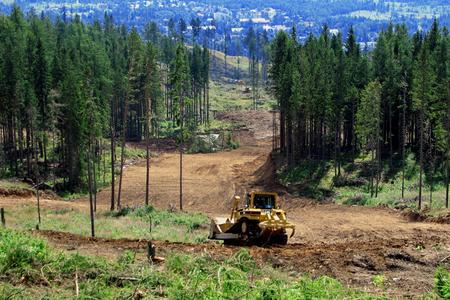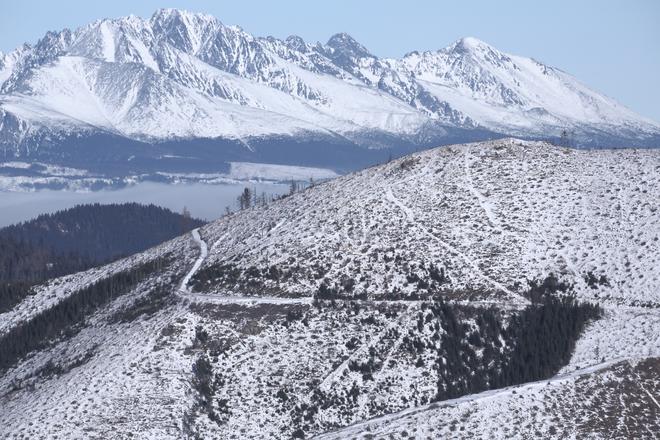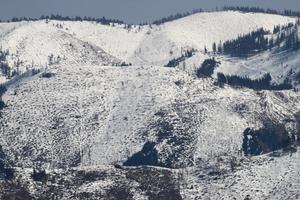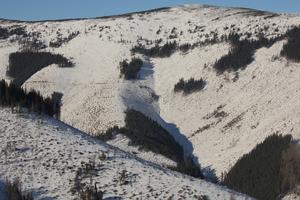Protected areas cover more than 20 percent of Slovakia’s territory, but that does not mean all that area is de facto protected. Every year authorities issue more than 2,000 exceptions from protection. Administrators of protected areas do not own the territories they administer and have no practical impact on its daily management. Seven different categories of protected areas and five levels of protection make the nature protection system quite complicated at the national level.
This is why some NGOs have come up with an initiative to split the system of nature protection into two zones: intervention and non-intervention, to ban logging, hunting, machinery movement and spraying chemicals (to allow unrestricted movement of tourists through protected areas). They also want to increase the acreage of non-intervention area from the current 2 percent to 5 percent of Slovakia’s territory.
National and international terms sometimes not corresponding
The World Database on Protected Areas (WPDA) is the most comprehensive global database of marine and terrestrial protected areas. These key global biodiversity datasets are widely used by scientists, businesses, governments and others to inform planning, policy decisions and management. The database is also used for reporting to the Convention on Biological Diversity on progress towards reaching the Aichi Biodiversity Targets (e.g. 17 percent of terrestrial land conserved through effectively managed protected areas by 2020 year).
The WDPA is a joint project between the United Nations Environment Programme (UNEP) and the International Union for Conservation of Nature (IUCN) and is administered by the UNEP World Conservation Monitoring Centre (WCMC). Last year it contained data from 245 countries and territories supplied by over 530 sources. Data is updated at least once every five years.
When you look at some protected areas in Slovakia, like the Low or High Tatras you will see that they are registered as category II (national park) according to the IUCN, but that does not correspond with the reality. Guidelines suggest that the category should be based on the primary management objective, which should apply to at least 75 percent of the protected area. The primary objective for a national park is to protect natural biodiversity along with its underlying ecological structure and supporting environmental processes, and to promote education and recreation.
Discrepancy between national nomenclature and international terminology is a specific problem here. In some countries, like UK, a national park on the national level is not exclusively linked to category II and is independent of its management approach. It means that in such cases the WDPA clearly states categorisation according to the management approach (UK national parks are mostly category V – protected landscape).
WDPA data for Slovakia comes from a number of sources depending on the types of locations. At the national level they are provided by the European Environment Agency (EEA) via the Common Database on Designated Areas (CDDA) dataflow. European countries send data to the EEA who in turn send the data to WCMC. The CDDA is a voluntary data flow agreed to between the member countries of the Eionet and the EEA. The EEA cannot change data that was officially reported by a member country. Thus, they are arguing that the above-mentioned problem should be solved at the national level.
Rare species are vanishing
State organisations falling under the Slovak Environment Ministry responsible for approving all activities within our national parks, however, have obviously no interest in changing the category of protected area.
The situation amongst Slovak national parks is clearly contrary to the above-mentioned definition of IUCN for category II. In 2005, the IUCN mission to the High Tatras made 18 recommendations which have remained unnoticed. Most of the parks have not had valid management plans for nearly 20 years now and no approved zoning. Of course there are activities which are not compatible with category II e.g. hunting, logging, infrastructure development.
One excellent example of insufficient management is the vanishing world of capercaillie as key species connected to old forests. Over the past 10 years their number in Slovakia has decreased by 40%.
In the Low Tatras alone more than 7,000 hectares of old forest have disappeared.
Another brilliant study focusing on forest management impacts on capercaillie habitat destruction and connectivity in the Carpathians discovered that Slovakia is ironically the country where more suitable habitat has been lost inside protected areas than outside.
Paper parks vs. real parks
Foreign experiences confirm that enforced nature conservation does not work. EU legislation has not helped improve the situation in nature conservation, if we do not count scientific identification of Natura 2000 sites or regular monitoring and reporting.

EU funds have directly supported the construction of ski resorts or fire protection roads within protected areas.
Unnecessary overlapping of national categories and international labels (e.g. Biosphere reserves, World Heritage sites) with designation of Natura 2000 sites only causes uncertainty and conflicts in quantifying the various objectives of a protected area. We need new legislation at the national level based on a completely new philosophical principle of real non-intervention. The current national laws allow human intervention even in nature reserves with the highest level of protection (2 percent of Slovakia) based on exceptions.
There have been nine environment ministers over the past decade and each of them has promised the completion of zoning. In the meantime, nature retreats. Our national parks have no clear mission connected to nature conservation and no SMART goals and objectives which could be specific, measurable, actionable, realistic and time-bound.
If we are unable to meet the criteria for such a long time, the state should not designate an area as a national park and international subjects responsible for WDPA should verify obtained information from sources and provide accurate information on the international level.
The current system of conservation with rapid habitat losses inside national parks is insufficient to sustain biodiversity and protect the national and regional biological heritage. The International community should take urgent action to repair the current system instead of bringing new tools (e.g. green list of well-managed protected areas or wilderness certification). As the first step to improve the situation in Slovakia we need to truly consider and update data in the WDPA so that we do not lie to ourselves and to the international community by purporting that paper parks are real parks. This only weakens real national parks and threatens reaching the Aichi Biodiversity Targets.
Juraj Švajda is teaching management of protected areas at the Matej Bel University in Banská Bystrica, Slovakia.
Author: Juraj Švajda


 (source: Karol Kaliský)
(source: Karol Kaliský)


